One of the most emblematic attractions in Hoi An – and dare we say in the whole country of Vietnam – is the Japanese Bridge. It’s so popular that some people come to Hoi An just to get to see it in real life. Here is why the Japanese Covered Bridge is so famous and why you should put it on your travel bucket list, if you haven’t done so yet.
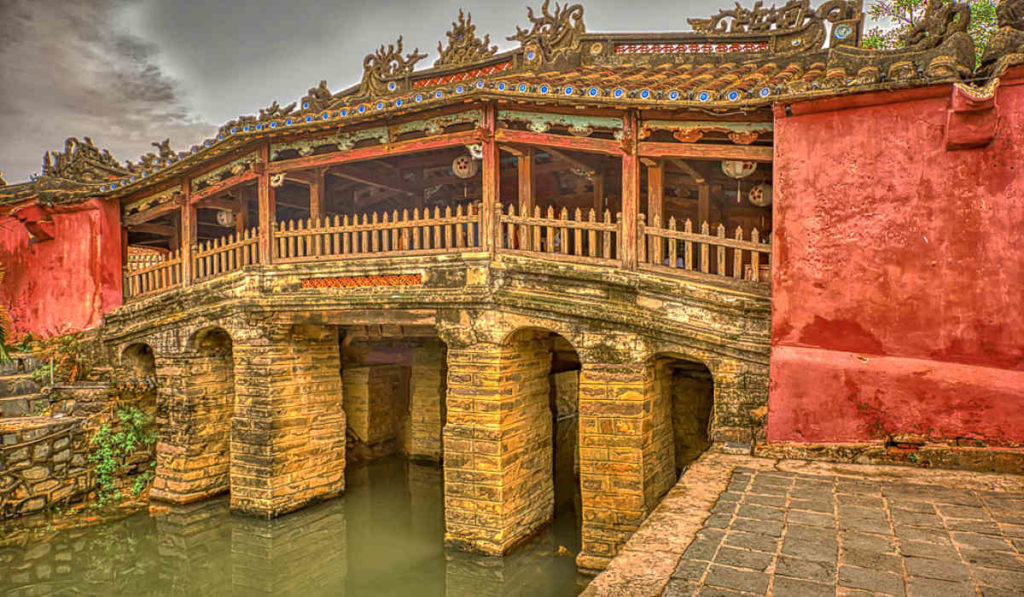
Visiting the Japanese Bridge
Locally, the Japanese covered bridge is known as the Pagoda Bridge or Cau Nhat Ban and it connects Tran Phu with Nguyen Thi Minh Khai.
The entrances to the Japanese covered bridge are guarded by weathered statues: a pair of monkeys on one side, a pair of dogs on the other. In Japanese culture, these two animals are symbols of holiness. It’s thought they were chosen as the building of the bridge began in a year of the dog and was finished in a year of the monkey. Another theory is that these animals can tame a sea monster called Mamazu, feared in Japanese legend as the bringer of earthquakes.
As for the bridge itself, it measures about 18 meters in length, has a wooden pagoda roof and is painted in red. On the north side of it, you will find a dedicated temple to Bac De Tran Vo, the Taoist God of weather. Here is where people in Hoi An often come to pray in order for their city to not be affected by earthquakes and other natural disasters.
Crossing over the bridge, you will find lots of paintings for sale by artists living in the vicinity. You’ll also find street artists in close proximity. So if you are looking for something both unique and tasteful, make sure to pay them a visit.
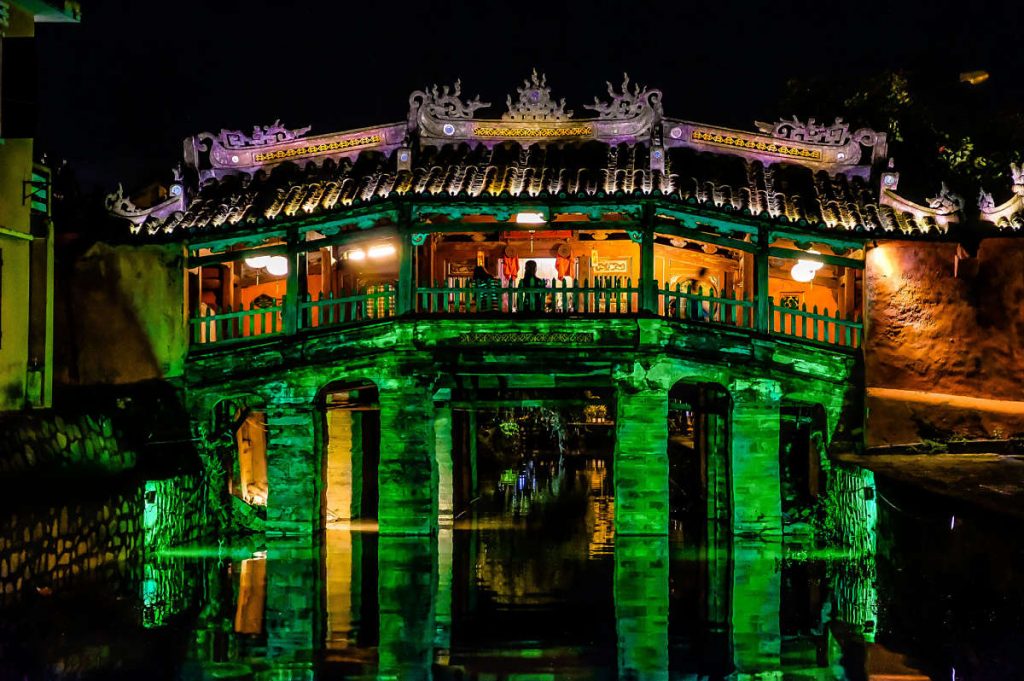
How to Buy a Ticket
In order to visit the Japanese bridge in Hoi An, you have to purchase the Old Town ticket (120,000 VND) which allows you to walk all the streets within the Old Town district and also gives you access to another five sights of your choice. This includes different heritage buildings and museums. You can buy your ticket from the ticket stall in front of the Japanese bridge or from any other ticket stall – there are about 11 situated around the outskirts of the Old Town.
When to Visit the Japanese Bridge
You can visit the Japanese Bridge in Hoi An any time of the year. It’s open 24 hours and can be explored on both sunny and rainy days since it is covered. However, during the tourist season it can get incredibly busy. If you’re looking for a good photo opportunity, it’s best to rise early and make the journey there at sunrise.
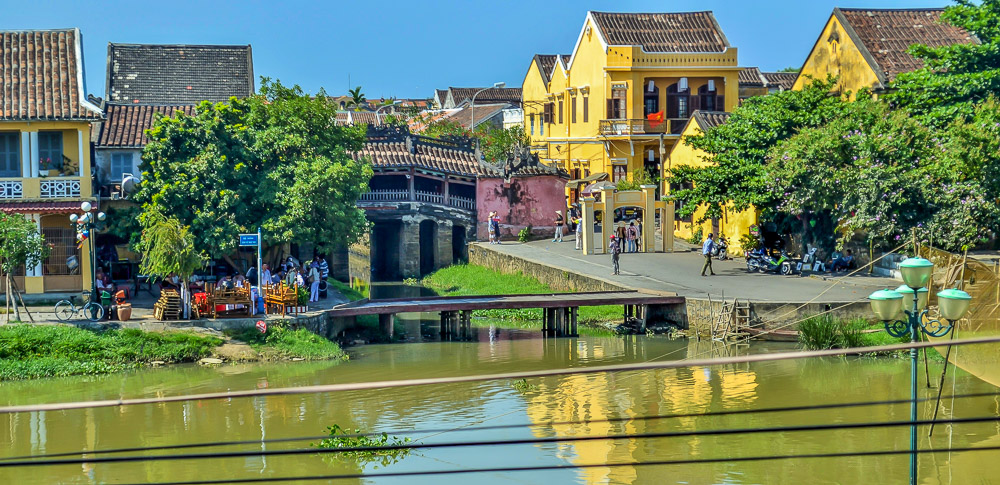
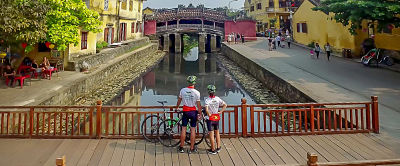
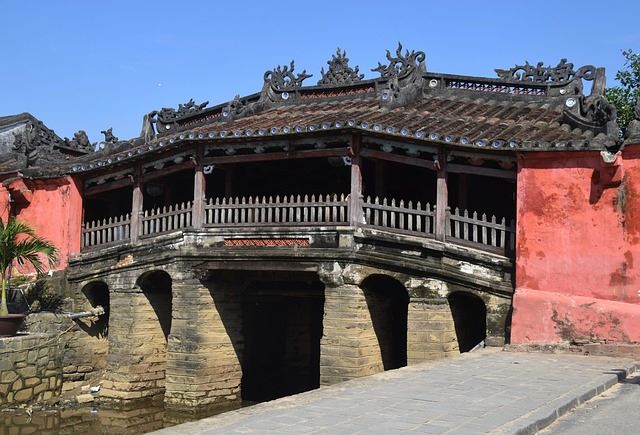
History of the Japanese Bridge
How Old is the Japanese Bridge in Hoi An?
According to history, the Japanese Bridge was completed sometime in the beginning of the 17th century, yet there is no clear information about the exact year. Later on, in 1719, Nguyễn Phúc Chu, who was the ruler of Southern Vietnam from 1691 until 1725, visited Hoi An. It is said that he personally carved the three Chinese characters over the temple door. The translation is: ‘the bridge to receive guests from afar.’
In 1986, the Japanese Bridge underwent renovation work which saw the restoration of the arch that was once flattened to make way for traffic. Today, the bridge stands as a symbol of Hoi An and remains as aesthetically pleasing as it was when it first opened. The bridge is just for walking nowadays, but bicycles can be carried across it.
Why Did the Japanese Build a Bridge in Hoi An?
The Japanese covered bridge in Hoi An was created by the Japanese people that were then living in the city, in order to be able to reach the Chinese quarter situated across the water. Today, it’s one of the most iconic attractions in Vietnam, visited by millions of people every year.